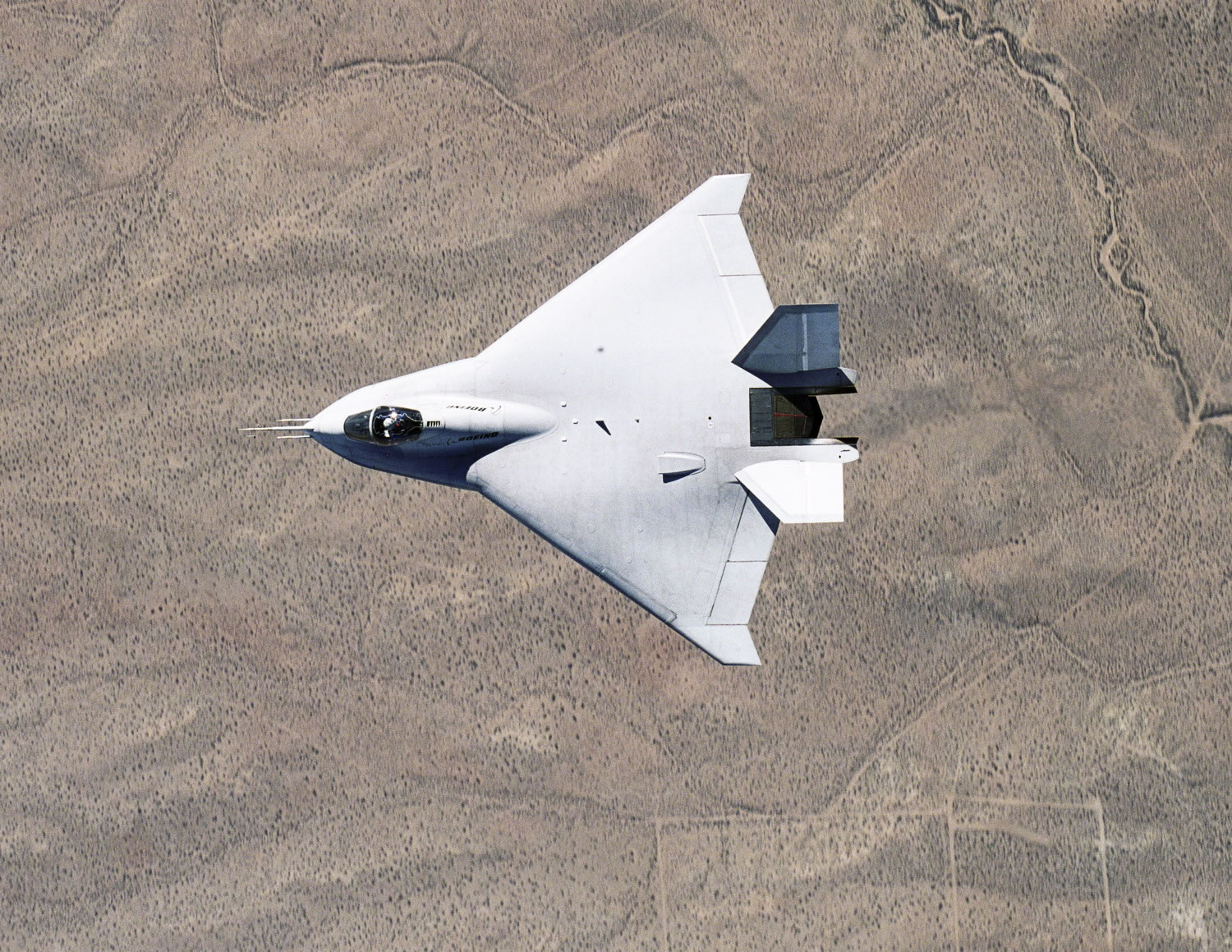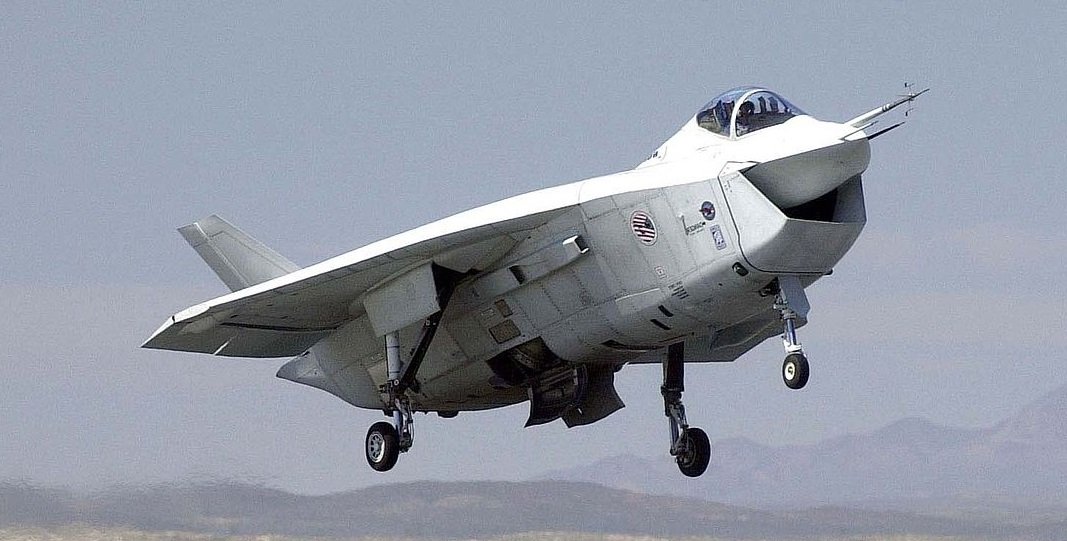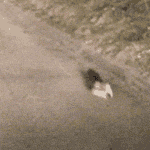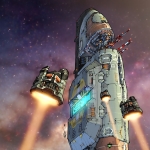|
I like weird and unusual aircraft, and boy there seems to be a limitless amount of them because I'm always discovering ones I haven't heard about. Post the weirdest ones you know, preferably with pictures! I'll start with the one I referenced in the title, the Caproni Ca.60: Back in the early days of aviation, there were some big technological problems to overcome if you wanted to build a passenger aircraft. Even after World War One, engine technology left much to be desired, aircraft were still mostly made of wood and thus pretty weak, and there really weren't airports anywhere yet. How do you build a plane that can carry over 100 people across the goddamn Atlantic ocean? Give it more loving wings!  And more loving engines!  It had a total of nine wings and eight engines (six pointing forward and two pointing backwards) and was absolutely enormous. Remote control operation of that many engines was apparently too great a technical challenge for the time, so instead it was controlled by a series of lights and indicators that sent signals to engineers who would sit in little pods next to the engines and adjust them accordingly. Amazingly, it managed to fly successfully... once. The second time they tried to fly it, it pitched up violently during a water handling test, stalled and crashed:  It was massively expensive to build the first time and there just wasn't the funding to build it a second time, so Caproni had a few artifacts of it salvaged for sentimental reasons and the rest was scrapped. A lot of people think this is one of the ugliest planes ever built, but I love this thing. It's from an era where they really didn't know what large transatlantic aircraft "should" look like yet, so they made something very unique, like some kind of luxury rail car of the sky. With nine loving wings.
|
|
|
|

|
| # ? May 4, 2024 07:22 |
|
Do more planes = more wings and/or engines? because in that case... So you're Soviet Union suddenly and unexpectedly fighting those pesky nazis back in the 1941. You have Tupolev TB-3 series bombers whose landing gear doesn't have breaks, but gosh can they carry a lot (a light T-27, T-37 or T-38 tank, for example) fly for a long time and far - ~2 000 miles. This bomber, which you officially retired back in 1939, makes up a solid quarter of your whole bomber fleet. There are some tactical disatvantages however: it has the airspeed of a laden swallow and maneuverability of a flying boat, which makes bombing of anything that has even most rudimentary air defense nearly impossible.  You also have a few nice-ish fighters, Polikarpov I-16, nicknamed "the fly" in the Spanish civil war, or "Donkey" by the original Soviet pilots. These, well, are fighters. Quick, maneuverable, but short range and somewhat limited carry capacity.  And you really want to strike one certain oil pipeline in Romania, running over Danube on the King Carol I bridge. Perhaps somewhat unsurprisingly, your conventional bombers fail miserably. What do you do? you dust off the good old Vakhmistrov's Circus file, officially known as the Zveno project. Basically you take the things you have and make a Zveno-SPB (combined dive bomber): 1 Tupolev TB-3 flying boat, and two I-16 flies, outfitted with conventional bombs, and successfully bomb the goddamn bridge in broad daylight, presumably, with Romanian nazis angrily, but ultimately impotently, shaking their fists against the skies. So... yeah. That's Zveno project. As for the images of the Zveno project: Zveno-SPB configuration  Zveno-1, I think  and in its' final form (Aviamatka [Mothership]): 
|
|
|
|
arpa posted:crazy russians Oh I love that idea Here's one I think a lot of people will be familiar with but which needs to go in any list of weird planes: NASA has a lot of large, delicate cargo that it needs to fly from various factories around the country out to the Kennedy Space Center. Enormous planes like the 747 were still in the design phase during most of the space race, so they built the wonderfully named Pregnant Guppy:  It worked out well, so they scaled it up and built the Super Guppy:  The Super Guppy, despite being incredibly silly looking, is what transported a lot of the critical cargo that made the moon landings possible. Here it is with Apollo 11's command module, for example:  Or the entire third stage of the Saturn 5 rocket:  In fact it works so well at doing its little niche jobs that NASA has kept it operational to the present day. Here it is delivering the Orion capsule:  I've seen it in real life actually! It's huge and very silly but boy can you fit some enormous things in it. Airbus recently wanted to get in on the "transporting massive, bizarre cargo" market and made the similar but much larger Airbus Beluga, which in my opinion is more terrifying than anything: 
|
|
|
|
NORTHROP XP-79 Yall ready for the worst aircraft design in history? Then feast your eyes on the XP-79, also know as the FLYING RAM. Built almost entirely from magnesium, which is extremely flammable and impossible to extinguish once started, this fiery death trap was design to ram the engines off of incoming bombers, with all the fuel and combustible elements that entails. Even if the plane didn't catch fire, the flying wing design meant the aircraft was inherently difficult to control and the impact of colliding with another plane would probably send it into the dirt. The project was canceled after its maiden flight, where it went into an unrecoverable spin after 15 minutes, killed the pilot when he attempted to bail out, and turned into a magnesium torch after crashing
|
|
|
|
Control Volume posted:NORTHROP XP-79 I thought I knew about all of Northrup's stupid flying wings but I'd never heard of that one somehow, lmao. Northrup (as in Jack Northrup, the founder) was really married to the flying wing design despite it getting rejected over and over again: The XB-35 heavy bomber:  The YB-49 heavy bomber:  Wikipedia posted:The second YB-49 was lost on 5 June 1948, killing its pilot, Major Daniel Forbes (for whom Forbes Air Force Base was named), co-pilot Captain Glen Edwards (for whom Edwards Air Force Base is named), and three other crew members,[2] one of whom, 1st Lieutenant Edward Lee Swindell, was a crew member on the Boeing B-29 that assisted Chuck Yeager in breaking the sound barrier in the Bell X-1 aircraft. Their aircraft suffered structural failure, with both outer wing sections becoming detached from the center section. Speculation at the time was that the YB-49 was lost due to excessive pullout loads imposed on the heavy airframe when a scheduled flight test of the large bomber's stall recovery resulted in a sudden and dramatic high-speed, nose-over dive. The post-stall high-speed dive resulted from the clean, low-drag, all-wing design, which gave the YB-49 a rapid speed increase in any type of dive. Fellow YB-49 test pilot Robert Cardenas later claimed that the YB-49 rotated backwards in stall, and that he warned Edwards about it. Jack Northrop later countered that such a behavior was impossible for the all-wing design.[3] "Hey Jack your stupid plane killed our test pilots and the other test pilots are telling you it has dangerous characteristics during even gentle dives." "That's impossible, gently caress you." They even made this advertisement in 1949 about how great it is and how in the future everything will be flying wings: https://www.youtube.com/watch?v=3lDTjzV0E3k Admittedly they eventually got one flying wing design accepted after decades of trying, which became the B-2 bomber. e: Oh man I haven't watched this ad in a while, I completely forgot that they compare the invention of the flying wing to the invention of the wheel. Sure it is, Jack Shame Boy has a new favorite as of 17:52 on Apr 26, 2019 |
|
|
|
The Goblin! Lot of fun flying this little guy in the Battlefield 1942: Secret Weapons expansion.
|
|
|
|
The USS Macon, along with it's sister craft the USS Akron, was one of the largest rigid airships around. Launched in 1933, it was intended to serve as a scout aircraft and flying aircraft carrier. Aircraft carrier? Yes. Both the Macon and Akron carried five Curtiss F9C Sparrowhawk planes for scouting. The planes would be launched from and return to a trapeze under the hangar.  It practice the Macon and Akron turned out to be huge pieces of poo poo. Neither survived longer than two years in service, both suffering various accidents during thir short careers, before succumbing to storm damage.
|
|
|
|
So it's early World War 1 and these newfangled "airplane" things sure seem like they'd be a great tool to kill people with. Back then, planes weren't really maneuverable enough to just mount the guns on the wings and point the whole plane at the target, so they usually had a gunner manually pointing a machine gun. There's just one problem - generally you want to shoot at things in front of you, but that's also where the propeller is. Sometimes people would just shoot through the propeller and hope for the best, and some planes were explicitly designed with armored propellers specifically so you could shoot them and probably not die. The synchronization gear would eventually solve this problem by synchronizing the gun to only fire when the propeller has rotated well out of the way of the bullets, but we need to kill people now goddammit! Well what else can we do... Enter the B.E. 9.  Yes, that is a gunner's position in front of the propeller. One guy sat there, head inches away from the whirling blades of death, and hoped to gently caress he remembered not to lean his head back too far. Better yet, in even a mild crash the inertia of the massive engine would force the propeller blades right through the gunner and both grind them up and crush them into paste at the same time, despite the crash being gentle enough for the pilot to walk away from unharmed. It went on a few experimental patrols but never saw serial production because of how obviously loving terrible an idea it was. However not to be outdone, France also made a similar design, the SPAD S.A.  It had all the same problems as the B.E. 9 (though it seems they added a bit of a grating behind the pilot, presumably so their hat doesn't get sucked up) but it actually entered serial production and was used, albeit briefly. It also had the additional pesky problem of the gunner's position just flat out falling the gently caress off during flight, which happened several times, taking the gunner with it. The wiki article has a fantastic quote: quote:A British evaluation of the type suggested "it would be expensive in observers if flown by indifferent pilots". That's such a politely British way of putting it
|
|
|
|
Shame Boy posted:So it's early World War 1 and these newfangled "airplane" things sure seem like they'd be a great tool to kill people with. Back then, planes weren't really maneuverable enough to just mount the guns on the wings and point the whole plane at the target, so they usually had a gunner manually pointing a machine gun. There's just one problem - generally you want to shoot at things in front of you, but that's also where the propeller is. Sometimes people would just shoot through the propeller and hope for the best, and some planes were explicitly designed with armored propellers specifically so you could shoot them and probably not die. The synchronization gear would eventually solve this problem by synchronizing the gun to only fire when the propeller has rotated well out of the way of the bullets, but we need to kill people now goddammit! Well what else can we do... Literally burst into giggles looking at these monstrosities.
|
|
|
|
I love every one of these dumb planes with all my heart.arpa posted:Do more planes = more wings and/or engines? because in that case... But what? is going on? here?? Do the fighters just sort of... hang off the bomber, and detach and fly away when it's time for bombing? Are they tied to the bomber to give it some extra juice? How...!? I love trying to interpret the gunner's facial expression. He's got a very Gallic "I hate my life" set to his shoulders there.
|
|
|
|
 https://en.wikipedia.org/wiki/Stipa-Caproni quote:The Stipa-Caproni, also generally called the Caproni Stipa, was an experimental Italian aircraft designed in 1932 by Luigi Stipa (1900–1992) and built by Caproni. It featured a hollow, barrel-shaped fuselage with the engine and propeller completely enclosed by the fuselage—in essence, the whole fuselage was a single ducted fan. 
|
|
|
|
Shame Boy posted:Airbus recently wanted to get in on the "transporting massive, bizarre cargo" market and made the similar but much larger Airbus Beluga, which in my opinion is more terrifying than anything:
|
|
|
|
Sunswipe posted:That's one of the most adorable things I've ever seen. Sure, until you realize that its entire skull opens up:  And it feasts on smaller planes:  (Unfortunately I can't find a picture of the one with the face eating the smaller planes but I'm sure it does too)
|
|
|
|
I can't stop giggling at this dumb thing "I'm a real plane!  " "
|
|
|
|
Tree Bucket posted:
Yes, they simply hang there until the go time, and after that they come back and get reattached. Also refueling. All while flying. It was called Vakhmistrovs' Circus for a reason. to quote Wikipedia: quote:Aviamatka (Airborne mothership) the whole Aviamatka idea is borderline  ; however somehow the whole project seems to have had surprisingly little death to it (only one fatality in testing). ; however somehow the whole project seems to have had surprisingly little death to it (only one fatality in testing).Anyway, not just to keep on droning about crazy russians, there's one thing that is technically not a plane, but, screw it, I'm writing a post about it anyway. The year is now 1957. It's January first, and as a new years' gift Berkeley Laboratory receives a generous grant from DOD to research the feasibility of powering ramjet engines using the heat from nuclear reactors. They spent $1.2 million on buildings alone. What were these nuclear ramjet engines to power? This little baby:  That's a SLAM: Supersonic Low Altitude Missile. What does it do? It flies at mach 4.2, is driven by 600MW nuclear reactor burning at 2300 Fahrenheit (1277 Celsius) and can fly around the Earth 4 and a half times below the radar before dropping its' nuclear payloads (16 of these) upon whoever happened to have angered the powers that used to be. The radioactive air it breathed out was not considered a problem, since the neutrons that would make it to the ground would not make up to a significant population per kilometer - as the speed of this "flying crowbar" was above a kilometer per second.  It was engineered to be unmanned - radio controlled up to a failsafe point, and TERCOM-controlled afterwards. Perhaps thankfully, the thing never got made into anything more than some engines on rails:  Tory II-A  and Tory II-C The engines were made in 1961, but the Pentagon got cold feet on the whole concept, deemed it to be slightly overprovocative (these drat russkies will build one of their own, and then what will we do?), and besides ICBMs proved to be just as effective and actually simpler, so the whole project was scraped by 1964. What's funny, though, is that these drat russkies went ahead and seem to have built something like that anyway - 9M730 Burevestnik (petrel / something that tells about incoming storm) / SSC-X-9 Skyfall nuclear-powered, nuclear-tipped cruise missle underwent successful nuclear power unit tests January of this year.
|
|
|
|
Scooty Puff Jr. is real lmao
|
|
|
|
arpa posted:Yes, they simply hang there until the go time, and after that they come back and get reattached. Also refueling. All while flying. It was called Vakhmistrovs' Circus for a reason. It was also planned that after it threw out all its nukes, its final task would be to fly to a different place and either make the reactor go supercritical or just ram itself into something important, which would both release an incredible amount of energy (since it's going at nearly hypersonic speeds) and a huge plume of radiation. From what I understand a big problem with the program was figuring out how to safely test something that can travel hundreds of thousands of miles, is constantly spewing radiation everywhere, and will create a chernobyl-level event at the end of its flight by design
|
|
|
|
Holy poo poo it looks like Airman from megaman 2!
|
|
|
|
AERONCA C-3 Its called the Flying Bathtub and I dont think any description really matters beyond that
|
|
|
|
During World War II, everyone tried using twin engine fighters at one point or another, but they could never compete in maneuverability with single engine planes, so heavy fighters were mostly a wet fart. How did the Nazis decide to solve this? Putting one engine on the front and one on the back Behold the Do-335.  Unlike most stupid Nazi superweapons this one actually a) was a good idea and b) worked, but never got out of the test fight stage before the end of the war. The US snagged one after the war and it's now in the National Air & Space Museum.
|
|
|
|
I don't have anything to add, I just like this thread. 
|
|
|
|
Shame Boy posted:I can't stop giggling at this dumb thing RBA Starblade posted:Scooty Puff Jr. is real lmao sudonim posted:Holy poo poo it looks like Airman from megaman 2! I think its important to stress, as many do not notice....its a twin seater.
|
|
|
|
AGGGGH BEES posted:During World War II, everyone tried using twin engine fighters at one point or another, but they could never compete in maneuverability with single engine planes, so heavy fighters were mostly a wet fart. How did the Nazis decide to solve this? Putting one engine on the front and one on the back Can someone explain the physics of this?
|
|
|
|
DicktheCat posted:I don't have anything to add, I just like this thread. Oh? Like planes huh? WAnna see more planes huh?? Well gently caress YOU ITS ERKANOPLANS https://www.youtube.com/watch?v=_symWK4T7n0 These weird things arent planes at all! They cant fly more than a few feet off the ground because they rely entirely on ground effect to get out of the ocean. What is ground effect, you ask? Well, to put it simply, All of those explanations are half true, because aerodynamics are complicated as gently caress! A wing works, essentially, by angling itself to shove air downwards to shove the plane upwards via momentum while moving forward, and (induced) drag comes from the air pushing backwards against the angled wing. When the wing is shoving air downwards like this, it also is leaving a void of air behind the wing because it shoved all the air in front of the wing down and out of the way, and air in the immediate area rushes in to fill it. The air being shoved out of the way and filling in behind the wing manifests as a large vortex, centered close to the wingtip. When the wing gets close to the ground, however, the air being shoved downwards runs into a surface and cant be moved out of the way as well, creating a higher pressure underneath the wing. The way that pressure is distributed, however, doesnt actually create much more lift, it just means the force of the wing, which is mostly upwards and a little rearwards, gets angled so its more upwards and less rearwards. Wingtip vortices are less prominent as a result (which means everyone got deeply confused by lifting-line theory and thought downwash and vortices were causing drag rather than being a manifestation of it). So what does that mean erkanoplans can do? Well, theyre much more efficient because they have less drag at the same speeds as an aircraft outside of ground effect. Uh, thats it. Thats the advantage. You just have to deal with high waves grounding (watering?) your pseudo-planes, salt water corroding your jet engines, the inability to ever venture out of the ocean, and just randomly crashing because there is no room for error if aerodynamics decide they hate you that day. Its a fast boat that can crash in the middle of the ocean. So they dont try to make them anymore!
|
|
|
|
not gonna lie, this is one of the weirdest threads you kids have come up with but at this point i am just happy you're having fun
|
|
|
|
cash crab posted:not gonna lie, this is one of the weirdest threads you kids have come up with but at this point i am just happy you're having fun Plane people are just train people but no one else knows they exist
|
|
|
|
Boeing's X-32, which lost the JSF competition with Lockheed Martin, always cracks me up.   It's probably the derpiest of the modern fighter plane designs. Given how garbage the F-35 turned out to be, it might have been the better choice.
|
|
|
|
We may need a change of thread title to "pyf stout, round-bellied jolly little aircraft." I guess the double-ended nazi thing breaks the pattern though. By the way, can any of you air history dudes explain why ww2 french bombers are so hideous?
|
|
|
|
Here is my contribution; the Schelde S.21. It's the result of a shipyard trying to build a plane. It was supposed to have a 20mm cannon in the nose and two MG's in the wingroots. The cannon would be fixed for air-to-air combat, but the pilot could engage the autopilot and swivel the gun around to be able to strafe ground targets. One was build before the war, but Nazi's being Nazi's they stole it and 'tested it to destruction. Cunts!  
|
|
|
|
Samovar posted:Can someone explain the physics of this? It's based in half on the concept of a pusher propeller. Most planes of the time (and I suppose today as well) had the propeller in front to essentially "pull" the plane forwards. But it's also perfectly possible to have it mounted to the rear, and "push" the plane instead, like so:  As for the reasoning behind that Do-335 in particular, the issue was that single-engine fighters of the time were fairly limited in the amount of ordnance and fuel they could carry. A fighter with two engines would generally be able to have more firepower, fly further, and loiter for longer. Additionally, high-powered aircraft engines were always in very short supply during the war, so the prospect of being able to make do with two individually less powerful engines was very tempting for logistical reasons as well. Now the problem with all this is that the usual way to get two engines into anything is to mount them into big honking nacelles in the wings. That's fairly straightforward in terms of engineering, it makes the plane's profile that much bigger and fucks with their aerodynamics pretty significantly. And while twin-engined heavy fighters were quite successful in certain areas (usually intercepting bombers), they were usually at a distinct disadvantage against much more maneuverable single-engined fighters. So the Do-335 attempted to solve that issue by having its cake and eating it, too: Two engines, one pulling at the front, one pushing at the rear, which allowed it to maintain a relatively very slim profile with decent aerodynamics. Supposedly the planes that actually did fly were stupid fast for a prop plane of that size and weight. As for my own contribution, have the Heinkel Lerche/Wespe:  The idea here was to have a VTOL capable propeller plane. It actually had two propellers, contra-rotating in that big ring around the center of the fuselage, with the pilot in front of them. The supposed advantage was that it could take-off vertically without the need for an airstrip (a real concern in late-war bombed-out Germany), and that the pilot would have a good field of view forwards. Of course the issue (well, one issue) was that the pilot would also have to land it vertically, without being able to see a drat thing because the ground (and whirling propellers of death) would be directly behind him. It never got build, both because the war ended and because just look at the loving thing. Think that's insane? Well, Focke-Wulf would go ahead and one-up that with the Triebflügel. They took the same general concept, and somehow added jet engines in possibly the most insane way possible: 
|
|
|
|
Luft'46 stuff is the best.
|
|
|
|
Perestroika posted:Think that's insane? Well, Focke-Wulf would go ahead and one-up that with the Triebflügel. They took the same general concept, and somehow added jet engines in possibly the most insane way possible: Jesus pissing Christ.
|
|
|
|
Shame Boy posted:Sure, until you realize that its entire skull opens up: So it gives birth to baby planes? You're not making it scarier. Bogus Adventure posted:Boeing's X-32, which lost the JSF competition with Lockheed Martin, always cracks me up. 
|
|
|
|
Tree Bucket posted:We may need a change of thread title to "pyf stout, round-bellied jolly little aircraft." I guess the double-ended nazi thing breaks the pattern though. The ugly ones were evolutionary designs from WW1 bombers and flat panes of glass are easier to manufacture
|
|
|
|
I remember seeing this in Wolfenstein. Next you’ll be telling me the Nazis had robotic dogs as well. Here’s my contribution to the Fat Plane thread- the Saunders-Roe Princess.  A post-war flying boat design, meant for rich trans-Atlantic travellers- the luxury of an ocean liner, the speed of plane. That was the idea anyway, the project was cancelled because the company decided it was uneconomical- flying boats were prone to corrosion and with all the new airfields constructed during the war, being able to land on water wasn’t that useful anymore. Shame really, apparently the prototype flew really well, and it looks pretty plush on the inside. 
|
|
|
|
The Princess has an interesting connection to the Guppy mentioned earlier. Apparently Saunders-Roe kept the ones they built at their facility and a decade or so later the guy who built the Guppy wanted to buy them to haul rocket components, but Saunders-Roe hadn't kept them maintained correctly so they were structurally unusable. The Guppy was Plan B.
|
|
|
|
The DFW 'Floh' ('flea') of 1915. A German fighter prototype, it wasn't very successful as it turned out that not being able to see out of the front of the cockpit was kind of bad.  https://en.wikipedia.org/wiki/DFW_Floh
|
|
|
|
Flying wings may be a bad idea for various reasons, but I love them anyways
|
|
|
|
Samovar posted:Can someone explain the physics of this? One engine sucks and the other one blows.
|
|
|
|

|
| # ? May 4, 2024 07:22 |
|
Perestroika posted:Think that's insane? Well, Focke-Wulf would go ahead and one-up that with the Triebflügel. They took the same general concept, and somehow added jet engines in possibly the most insane way possible: I was wondering when tipjets would get mentioned Some designs using them actually got made and used in low numbers, like the YH-32 Hornet helicopter:  Those are ramjets at the end of the blades. It's not all that interesting-looking, until you see what it looks like when running:  Gee, I wonder why they didn't catch on
|
|
|































